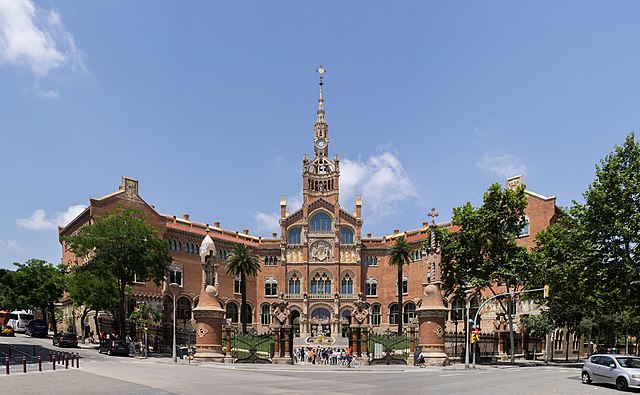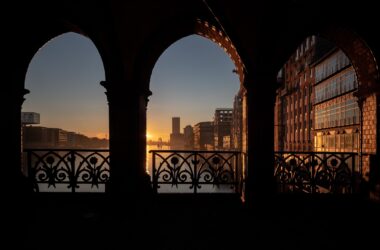When you think of hospitals, you might imagine sterile environments with little character. But the Hospital of the Holy Cross and Saint Paul (Hospital de la Santa Creu i Sant Pau) in Barcelona defies that stereotype. This hospital is a striking blend of innovative architecture, rich history, and significant contributions to medical science. Not only is it a functioning healthcare facility, but it also stands as a monument to Catalan Modernism and the visionary minds behind its creation.
Table of Contents
- Historical Background
- Architectural Significance
- Structure and Layout
- Cultural and Artistic Value
- Medical Advancements and Contributions
- World Heritage Recognition
- Restoration and Preservation
- Visitor Experience
- Impact on the Local Community
- Modern-Day Relevance
- Notable Events and Milestones
- Future Prospects
- Personal Stories and Testimonials
- Conclusion
- FAQs
Historical Background
Founded in 1401, the Hospital of the Holy Cross and Saint Paul was initially created to consolidate six smaller hospitals in Barcelona. The aim was to provide better healthcare services to the city’s growing population. The hospital was a crucial institution in medieval Barcelona, offering care and shelter to the sick and needy. Over the centuries, it evolved, reflecting the advancements in medicine and the changing needs of society.
One of the pivotal figures in its history was Lluís Domènech i Montaner, a renowned architect who redesigned the hospital complex in the early 20th century. His vision transformed the hospital into an architectural masterpiece that harmonized functionality with beauty, aligning with the Catalan Modernism movement.
Architectural Significance
The Hospital of the Holy Cross and Saint Paul is celebrated for its architectural grandeur. Designed by Lluís Domènech i Montaner, the hospital is a prime example of Catalan Modernism, characterized by its vibrant colors, organic shapes, and intricate details. Montaner’s design philosophy was that hospitals should be places that promote healing not only through medical care but also through their environment.
The hospital complex comprises 27 buildings, each adorned with elaborate mosaics, stained glass, and sculptures. The use of natural light, open spaces, and lush gardens was intended to create a therapeutic atmosphere for patients. This design approach was revolutionary at the time and continues to inspire modern hospital designs.
Structure and Layout
The layout of the hospital is meticulously planned, with each building serving a specific function. The central administration building, with its grand entrance and detailed façade, sets the tone for the rest of the complex. Patient pavilions are organized around gardens and courtyards, providing a peaceful environment for recovery.
Notable architectural features include the distinctive towers, domes, and intricate tilework that adorn many of the buildings. The pavilions are connected by underground tunnels, a practical solution to minimize patient movement and reduce the spread of infections.
Cultural and Artistic Value
Art and architecture are seamlessly integrated throughout the hospital. Montaner collaborated with various artists to incorporate artistic elements that would enhance the healing environment. The hospital’s walls are adorned with colorful mosaics, while sculptures and wrought iron details add to the aesthetic appeal.
Stained glass windows, often depicting religious and nature themes, flood the interiors with light and color. These artistic elements were not merely decorative; they were intended to uplift patients’ spirits and contribute to their overall well-being.
Medical Advancements and Contributions
Throughout its history, the Hospital of the Holy Cross and Saint Paul has been at the forefront of medical advancements. It played a crucial role in public health and medical education in Barcelona. The hospital was among the first to adopt new medical technologies and techniques, setting standards for others to follow.
In addition to providing excellent patient care, the hospital has been a center for medical research. It has contributed significantly to various fields of medicine, including surgery, infectious diseases, and pediatrics. The hospital’s commitment to innovation continues today, as it remains involved in cutting-edge research and medical advancements.
World Heritage Recognition
In 1997, the Hospital of the Holy Cross and Saint Paul was designated a UNESCO World Heritage Site. This recognition was based on its outstanding architectural and historical value. The hospital is considered one of the finest examples of Catalan Modernism, a testament to the creative genius of Lluís Domènech i Montaner and the cultural movement he represented.
The UNESCO designation helps ensure the preservation of the hospital’s unique architecture and its continued use as a cultural and educational site.
Restoration and Preservation
Preserving a site as intricate and extensive as the Hospital of the Holy Cross and Saint Paul is no small feat. Over the years, significant efforts have been made to restore and maintain the buildings. These efforts have included careful restoration of mosaics, stained glass, and structural elements to their original splendor.
The hospital’s restoration has faced challenges, such as the need to update facilities to meet modern standards while preserving historical features. However, these efforts have been successful, ensuring that the hospital remains a functional healthcare facility and a cultural landmark.
Visitor Experience
Today, the Hospital of the Holy Cross and Saint Paul is open to visitors who can explore its rich history and stunning architecture. Guided tours provide insights into the hospital’s past and its role in Barcelona’s history. Visitors can admire the intricate mosaics, walk through the serene gardens, and learn about the medical innovations that took place within its walls.
The hospital also hosts exhibitions and educational programs, making it a vibrant center for learning and cultural exchange.
Impact on the Local Community
The hospital has long been a cornerstone of the Barcelona community. It has provided essential healthcare services, contributed to public health initiatives, and supported medical education. The hospital’s presence has also had a significant economic impact on the surrounding area, attracting visitors and boosting local businesses.
Community outreach programs have been an integral part of the hospital’s mission, ensuring that healthcare services are accessible to all, regardless of socioeconomic status.
Modern-Day Relevance
Despite its historical roots, the Hospital of the Holy Cross and Saint Paul remains relevant today. It continues to function as a healthcare facility, integrating modern medical practices with its historic environment. The hospital is also involved in ongoing research and innovation, contributing to advancements in medical science.
Its role as a cultural and educational site ensures that the hospital remains a vital part of Barcelona’s social and cultural fabric.
Notable Events and Milestones
The hospital’s history is marked by numerous notable events and milestones. From groundbreaking medical achievements to important historical moments, the hospital has played a significant role in shaping Barcelona’s history.
Milestones include the completion of major construction phases, significant medical breakthroughs, and the celebration of anniversaries that commemorate its enduring legacy.
Future Prospects
Looking ahead, the Hospital of the Holy Cross and Saint Paul has plans for future development that will enhance its capabilities and preserve its heritage. These plans include expanding healthcare services, continuing restoration efforts, and further integrating technology into its operations.
The hospital faces challenges, such as balancing modernization with preservation, but it also has many opportunities to build on its legacy and continue its mission of healthcare excellence.
Personal Stories and Testimonials
The impact of the Hospital of the Holy Cross and Saint Paul can be seen through the personal stories and testimonials of patients and staff. These accounts highlight the hospital’s role in providing compassionate care and its influence on individual lives.
Patients often speak of the hospital’s unique environment and the positive effect it has had on their recovery. Staff members share their experiences of working in such a historically and culturally rich setting.
Conclusion
The Hospital of the Holy Cross and Saint Paul is more than just a healthcare facility; it is a symbol of Barcelona’s rich cultural and architectural heritage. Its unique blend of history, art, and medical innovation make it a remarkable institution. From its founding in the 15th century to its current status as a UNESCO World Heritage Site, the hospital has continually evolved, adapting to the needs of its community while preserving its unique identity.
The architectural genius of Lluís Domènech i Montaner and the contributions of countless medical professionals have cemented the hospital’s place in history. Its ongoing commitment to healthcare, education, and research ensures that it will remain a vital part of Barcelona’s future.
FAQs
What is the architectural style of the Hospital of the Holy Cross and Saint Paul?
The Hospital of the Holy Cross and Saint Paul is a prime example of Catalan Modernism, characterized by its vibrant colors, organic shapes, and intricate details. This style harmonizes functionality with beauty, creating an environment that promotes healing.
Who was the architect behind the hospital’s design?
The hospital was redesigned in the early 20th century by Lluís Domènech i Montaner, a renowned architect and a key figure in the Catalan Modernism movement. His visionary approach transformed the hospital into an architectural masterpiece.
How can visitors explore the hospital today?
Visitors can explore the hospital through guided tours that provide insights into its history, architecture, and medical contributions. The tours include access to the main buildings, gardens, and exhibitions that highlight the hospital’s cultural and artistic value.
What makes the hospital a UNESCO World Heritage Site?
The hospital was designated a UNESCO World Heritage Site in 1997 due to its outstanding architectural and historical value. It is considered one of the finest examples of Catalan Modernism and a testament to the creative genius of Lluís Domènech i Montaner.
How has the hospital contributed to medical advancements?
Throughout its history, the Hospital of the Holy Cross and Saint Paul has been at the forefront of medical advancements. It has played a crucial role in public health, medical education, and research, contributing significantly to various fields of medicine, including surgery, infectious diseases, and pediatrics.









